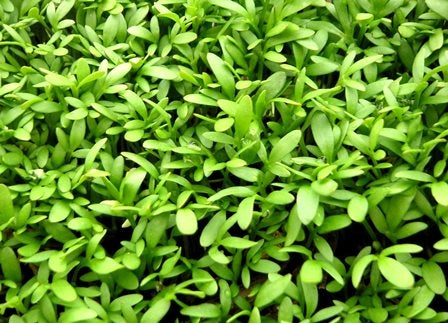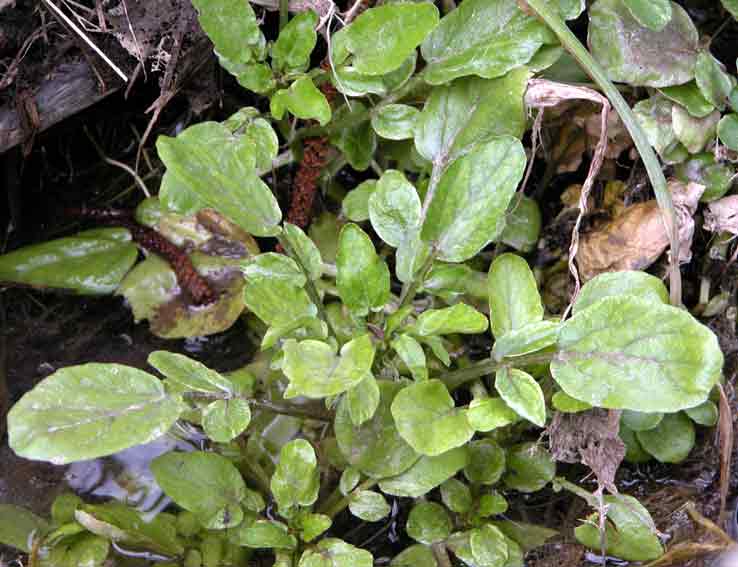COMMON WATERCRESS - vs12
Have a question?

COMMON WATERCRESS - vs12
Dettagli
Species: Lepidium sativum L.
Family: Cruciferae
Brief history and botanical notes on the plant
Watercress, originally from the Near East (Persia), is known as a spontaneous plant of humid areas: Nasturtium officinale R. Br. (watercress), but under the same common name also as a leafy vegetable to grow in your own vegetable garden for flavor salads, soft cheeses, eggs and cold dishes. Since ancient times, due to its spicy and slightly pungent flavour, due to its mustard oil content, it has been given healthy and beneficial virtues by the Persians and Romans.
It has a green color and small, white flowers, the seed is red, and is characterized by tall (about 20 cm) and thin stems with thin oval-shaped leaves.
Family and variety
The common watercress (Lepidium sativum L.) belongs to the Cruciferae family. Among the varieties:
• Agretto , also known as English watercress, very similar in appearance to chives
• Cochlearia, variety of watercress known for its concentration of vitamin C
• Watercress, which grows on the banks of streams, has rounded leaves and is harvested in the winter-spring period
• Meadow cress, grows in sunny meadows, is a very long plant with broad leaves.
Pedoclimatic needs
It resists the cold, grows in practically any type of soil (better if rich in organic substance), does not require particular treatments.
Sowing and transplanting times
Sow broadcast or in rows, from March to September/October in the open field, even in pots, approximately 3 grams of seeds per square meter are needed. Just bury them very little, a couple of millimetres, in clayey soils you can cover them with sand or a little soil.
If under tunnels or in dry periods, water little and frequently to help seed germination.
Watercress grows very quickly, which is why it is used to carry out phytotoxicity analyzes (watercress tests), its germination requires only 24 hours at 27° (or 36 hours at 22°). Dilutions of 30% are added to the seeds and if the germination index is lower than 40% compared to the control sample there is the presence of substances that cause lethal effects on the plants, from 40 to 60% there is hardly any lethality but there may be developmental delays, with indices above 60-70% there is no obvious damage to the plants.
Fertilizations
Watercress does not require particular fertilization, a little compost is more than sufficient. Ideal in succession with courgettes and tomatoes, it is able to exploit the residual fertility of the soil without the need for fertilization.
Crop care and irrigation
The intercropping of radish and watercress enhances the organoleptic characteristics of both crops. It does not require particular cultivation care, its cultivation is simple.
Irrigate to achieve the objective of keeping the soil moist without unnecessary water stagnation which could cause root asphyxia in clayey soils.
For sowing, light digging is necessary to prepare the seed bed. After about 10 days the first leaves are present and harvesting begins after a month.
Adversity
There are no particular adversities but being a cruciferous plant, the watercress, in the event of dry and droughty years, could suffer the summer attack of earth fleas (altica), which are very annoying if the seedlings are in the initial phase of development. Delay sowing times or use pyrethrum if the invasion is persistent.
Production and collection
Watercress is harvested both during cultivation and close to flowering. The leaves must be dry and at least 5-10 centimeters high. Harvesting can be done with scissors, or by hand, removing the leaves from the stems; sprouts are often used. From one square meter of surface you can harvest approximately ½ kg to 1.2 kg of watercress. Considering that it is never consumed alone, even in a small garden it is easy to always have some available.
Nutritional values
Watercress is an aromatic plant, but it is also considered a medicinal plant as it is rich in vitamins (particularly C), bitter substances with a detoxifying effect on the whole organism and mineral salts (including sulphur). It is also a natural diuretic, good for those suffering from water retention and hypertension. It also has digestive and cardiovascular properties. Watercress is effective against spring tiredness and anemia.
Biodynamics
Sowing and harvesting on leaf days.



